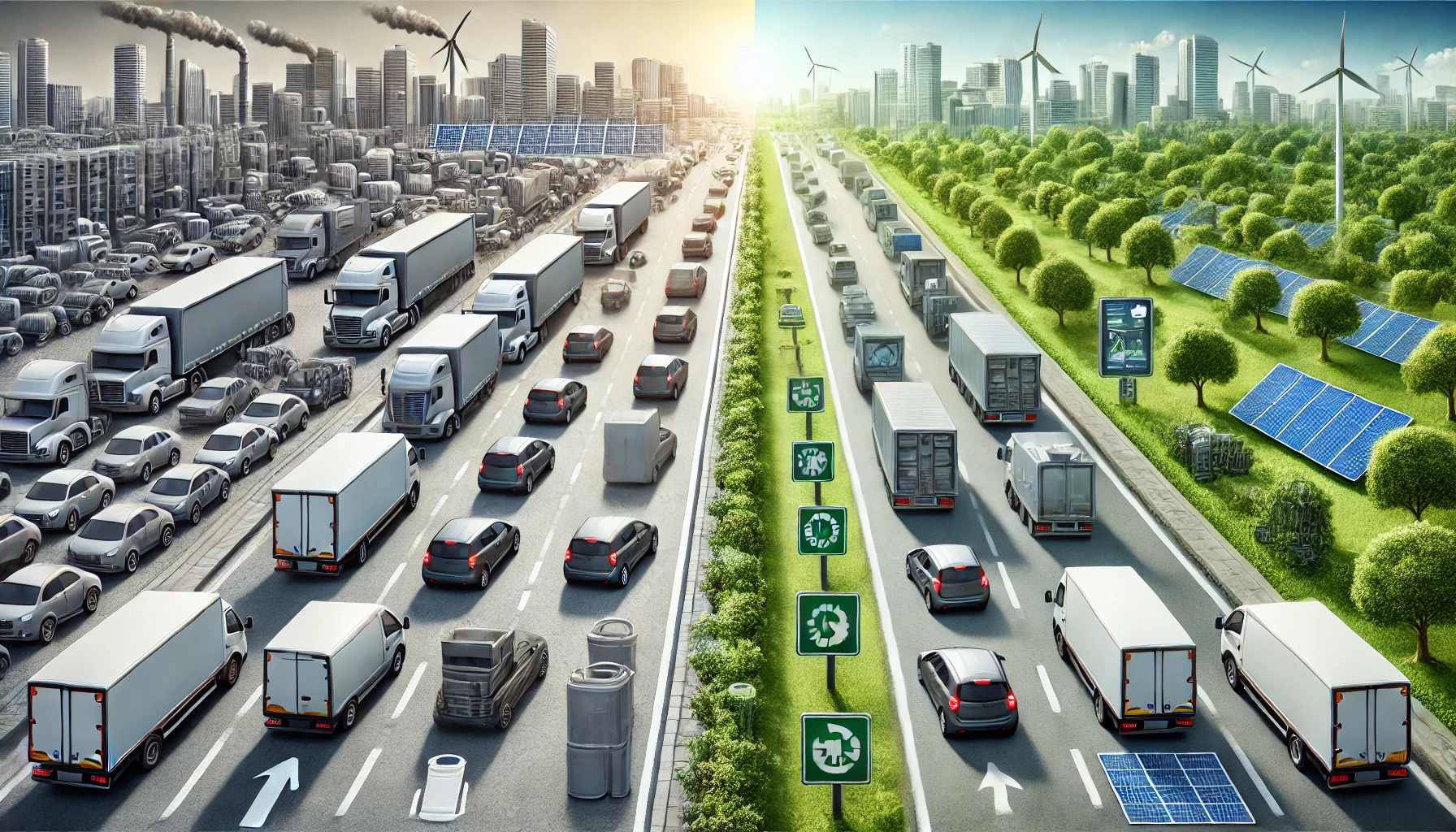What Is Fleet Rationalisation and Why Does It Matter Today?

Fleet rationalisation is increasingly a cornerstone of effective transport management. It could be a logistics company, a public transport body, a school bus fleet, or a private enterprise; the cost, effectiveness, and carbon impact of a fleet all depend on planning, organisation, and utilisation of a fleet. Plain and simple, fleet rationalisation is the intelligent practice of reviewing, simplifying, and aligning your motor vehicle assets to your actual business needs.
In this blog, we’ll examine the key challenges faced by large and growing fleets and how rationalising them can lead to better performance, reduced costs, and long-term sustainability.
1. Oversized or Underused Fleet
One of the biggest challenges fleet managers have is owning too many units or not operating them effectively. It's easy for departments or regions to hold onto additional units "just in case," resulting in idle assets that still incur insurance, registration, and maintenance costs.
Fleet rationalisation starts with the assessment of vehicle usage rates. The vehicles that persistently remain below standards can be refitted, redeployed, or retired. The objective is to have a lean, high-performance fleet that enables all operations without any unnecessary overhead.
2. Inconsistent Vehicle Types and Specifications
Most large fleets expand over time as vehicles purchased for diverse purposes accumulate, with an eclectic mix of brands, models, fuel types, and maintenance requirements. Non-standardisation increases the cost of servicing and inventory management.
A rationalised fleet takes advantage of standardising vehicle types wherever possible - simplifying the training requirements of drivers and technicians, facilitating spare parts inventory management, and enhancing resale value. Homogeneity of the fleet facilitates easy maintenance and procurement on a strategic level.
3. High Operating and Maintenance Costs
Worn-out, old, or poorly suited vehicles usually burn more fuel, require higher maintenance, and waste more time. Much too often, in most organisations, the upkeep expenses get out of hand when the composition of the fleet is not according to requirements for operations.
Fleet simplification avoids this by replacing ageing vehicles with efficient, new, and low-emission vehicles. It even introduces electric vehicles (EVs) and hybrids that save money in the long term and meet environmental objectives.
4. Unsupportive Fleet to Business Needs
Over time, the business needs change, while the fleet may not always keep up. A fleet established for a particular business plan five years ago might no longer be suitable for the firm today.
Fleet rationalisation requires collaboration with operational teams to be aware of routes, loads, schedules, and vehicle capability. Managers can then match fleet size and capacity to immediate and future operational requirements so that the correct vehicle performs the correct task at the right time.
5. Inefficiencies Between Locations or Departments
For companies that operate fleets in several cities or regions, various units tend to establish their procedures. There might be one site operating lean with tight timetables and another with idling vehicles left untouched for weeks.
By rationalisation, corporations are able to pool decision-making and enforce standardised policies in all units. This standardisation ensures equitable allocation, reduces duplication, and assists managers in maintaining a full-picture perspective of what is required.
6. Challenges in Monitoring and Decision Making
Large, heterogeneous fleets create enormous volumes of data from usage metrics to maintenance records, fuel usage, and expenses, and so forth. When this information is unconsolidated or stale, it is hard to make unambiguous, confident decisions.
Fleet rationalisation works best if fuelled by advanced fleet management software. These technologies bring multiple vehicle data sources together into easy-to-use dashboards, delivering visibility into asset performance, utilisation, and expense. Managers can better model "what-if" situations, select replacement priorities, and budget more efficiently.
7. Environmental and Regulatory Pressures
There is growing pressure on companies to cut emissions, increase fuel efficiency, and meet green mandates. Keeping outdated diesel vehicles or running a larger-than-essential fleet makes this more difficult.
By eliminating duplicate vehicles, adding green models, and moving towards cleaner technologies, rationalisation assists in fulfilling sustainability goals. There are also incentives or grants available in certain areas for shrinking fleets and green refurbishments that rationalised planning can assist in accessing.
Conclusion
Fleet rationalisation isn't just about slashing expense or trimming numbers; it's about building a smarter, more flexible, and more future-proofed fleet. From removing inefficiency to enhancing performance and realigning with business objectives, rationalisation provides both short-term and long-term gains.
With Arena Softwares, we enable organisations to make informed decisions in fleet planning, optimisation, and maintenance. Our smart systems assist in tracking utilisation, suggest right-sizing initiatives, and aid in shifting towards new, green fleets.
With Arena technology, you have a clear path to a leaner, greener, and more efficient fleet. Contact us today to learn how your company can gain from strategic fleet rationalisation.
